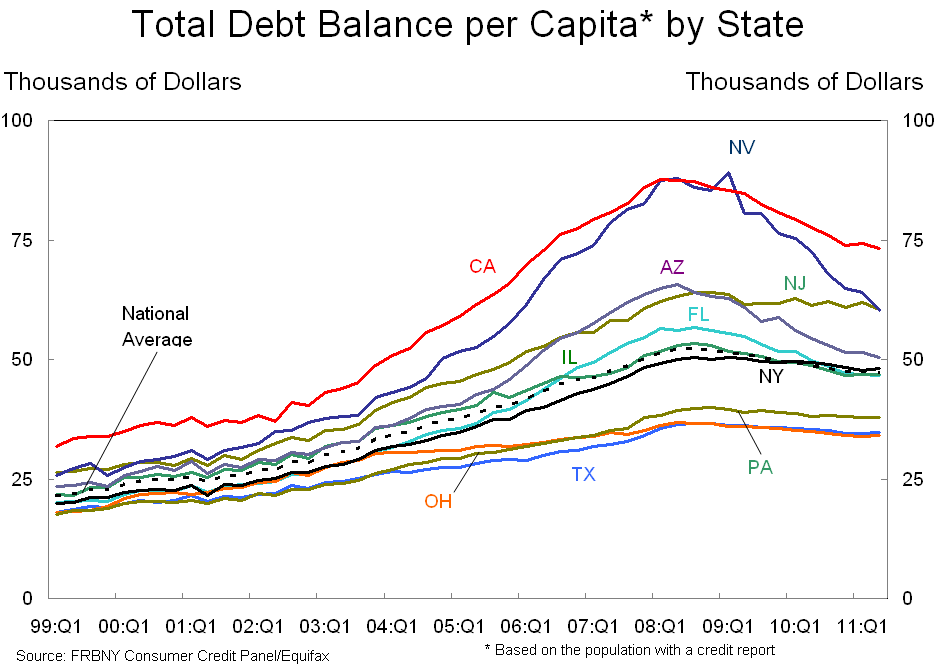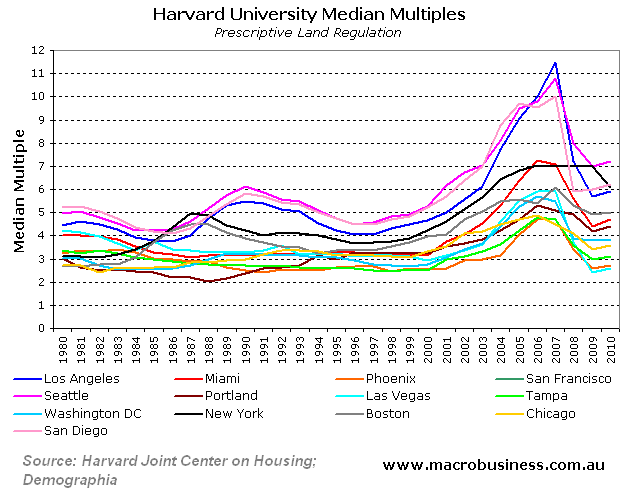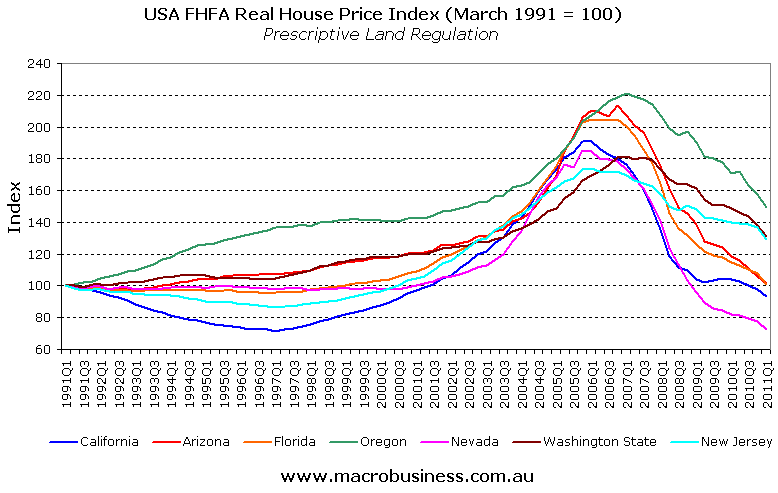
Last week, Rortybomb published an interesting article entitled Investigating the Link between Debt, Deleveraging and the “Texas Miracle”. In the article appeared the below chart showing per capita debt balances in key US states using data extracted from The Federal Reserve Bank of New York quarterly data release (excel file available here):
The chart shows large variances in per capita debt levels between states. Further, while some states experienced a huge build-up in debt levels in the lead-up to 2008 followed by large declines in debt levels (deleveraging) afterwards, others experienced only minor changes over the same period.
The article then contains the following chart showing a strong correlation between the percentage of deleveraging versus the unemployment rate; that is, the percentage of decline in debt from Q2 2008 to Q2 2011 versus the June 2011 unemployment rate for the states in question above:
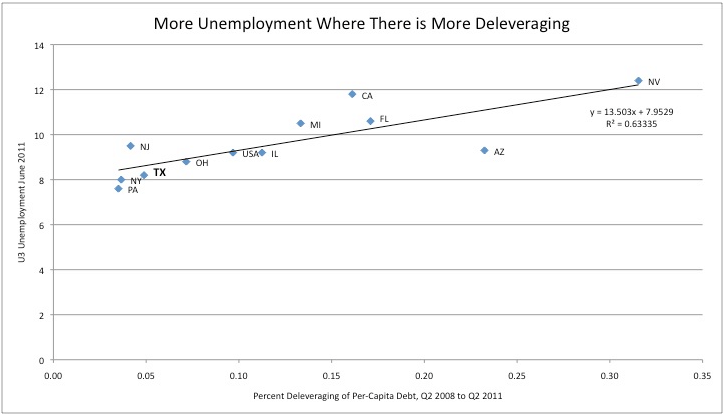
The article then concludes with the following statements about Texas’ relative out-performance:
…Texas had very little in terms of a debt build-up and as such hasn’t experienced a significant decline in leverage since the recession. The states we see with the strongest buildups and declines are states with the biggest housing bubbles. These are the states with the highest unemployment as well…
Texas never had much of a housing bubble to begin with… the rather strong regulations on the mortgage market [in Texas] and growth in the housing stock are more likely the factors in preventing the build-up of housing debt that in turn isn’t holding back the economy. There are strong regulations on the housing market, especially in terms of housing equity loans that in turn make it harder to bid up values.
Although the article contains some great data, I believe that it misses the key reason behind Texas’ out-performance – namely its deregulated and highly responsive urban planning system.
While it is true that Texas’ credit rules are slightly stricter than most other states – e.g. home equity withdrawal is restricted to 80% of the homes value and mandatory cool-off periods are in place – I would hardly call them conservative. After all, you can still buy a home in Texas with only a 3.5% deposit, albeit with annual mortgage insurance payments (see here and here for details).
As I have shown many times before, housing markets with responsive land/housing supply are both more affordable and less prone to bubbles/busts than markets where land supply is constrained by physical and/or regulatory barriers. And Texas is arguably the best example of the benefits achieved from highly responsive land/housing supply, given that its home prices have remained both affordable and stable in the face of very high population growth (Dallas and Houston each added a whopping 1.2 million people each over the past decade!).
But to only single-out Texas is unfair, since roughly half of the housing markets in the US (by population) also operate urban planning systems more or less free of prescriptive land-use regulations (e.g. restrictive zoning, urban growth boundaries, up-front development charges, etc) and have achieved similar outcomes of relatively stable and affordable housing.
To illustrate this point, consider the below charts showing both Median Multiples (median house prices divided by median household income) and real house prices in cities/states deemed by Demographia and/or the Brookings Institution as having prescriptive land-use regulations versus those with more responsive land-use regulations.
First, the cities/states with prescriptive land-use regulations:
Second, the cities/states with more responsive land-use regulations:
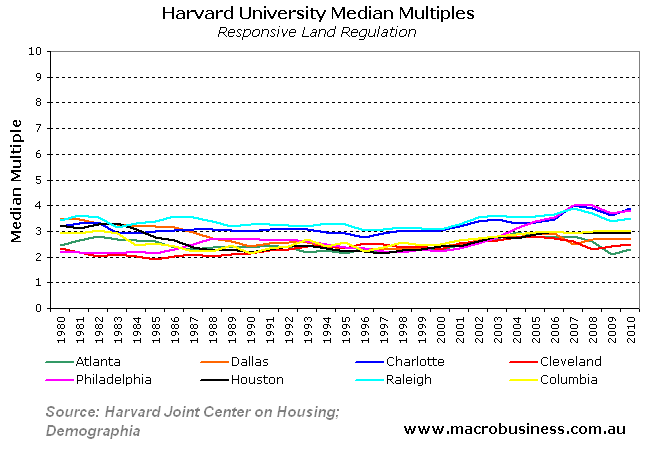
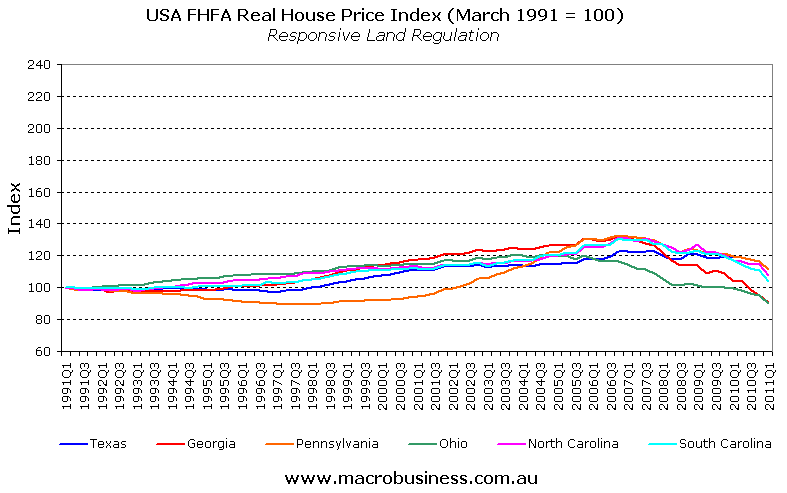
As you can see, the cities/states with less prescriptive land-use regulations (planning systems) have achieved both more affordable housing and lower levels of house price volatility than those with more onerous requirements.
Some of the key reasons behind this outcome were explained in last week’s article:
…restricted land/housing supply is a double-edged sword. With supply unable to respond quickly to changes in demand, the housing market becomes overly sensitive to demand shocks, resulting in greater price volatility and boom/bust cycles as demand rises/falls.
During an upswing, the extra demand will automatically feed into higher home prices rather than new construction. In turn, the price rises and perceived scarcity will encourage speculative demand and ‘panic buying’ from first-time buyers, which helps to drive prices up even further. The opposite holds during a downturn, where unresponsive supply will help to accentuate price falls as new housing planned years ago continues to hit the market.
And the implications of this result is shown in the first chart of this article: Texas, Pennsylvania and Ohio – all states with more responsive land-use regulations – experienced a smaller build-up and subsequent decline of debt than the states where land-use regulations were strict – namely, Nevada, California and Arizona.
Moreover, according to the same Federal Reserve Bank of New York data, the supply responsive states – Texas, Pennsylvania and Ohio – all have far lower levels of per capita mortgage debt and home equity lines of credit (HELOC) debt than the supply restricted states (see below chart).
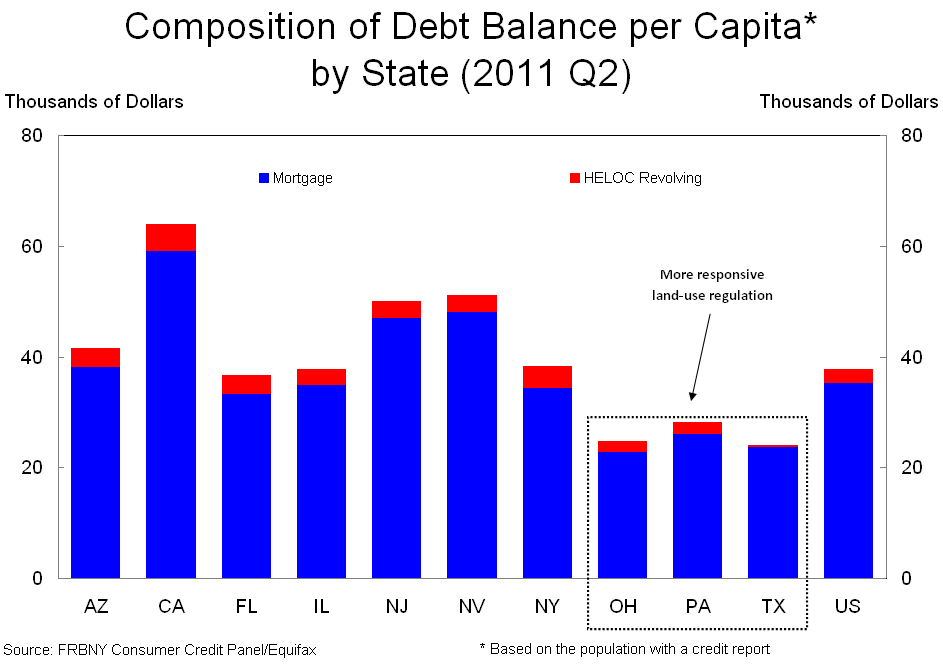
This analysis is supported by a recent article by Demographia’s Wendell Cox, which showed overwhelmingly that US house price escalation was far greater in the more restrictively regulated housing markets at the peak of the US housing bubble:
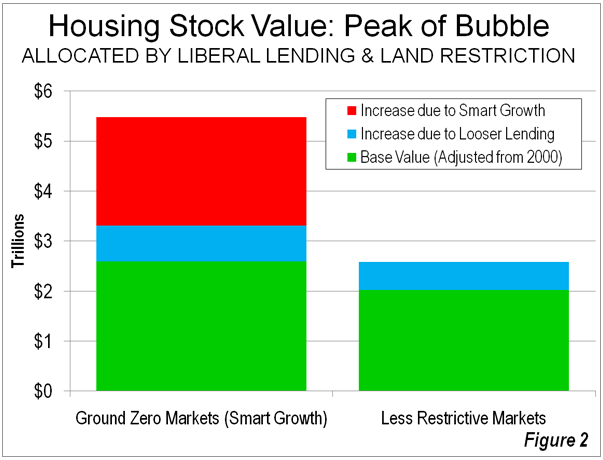
As was the subsequent losses in the years following the global financial crisis:
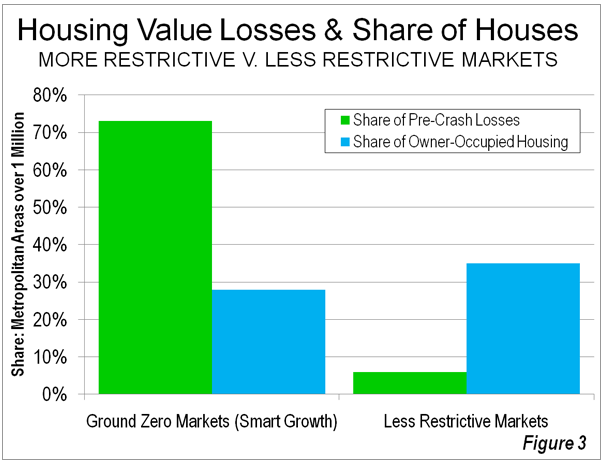
The key point to take away from this analysis is that the supply-side of the housing market is critical.
While there are strong arguments for cracking down on the destructive speculation and easy credit that has fuelled the world’s housing bubbles, it is paramount that authorities work to free-up the supply-side barriers that have enabled the credit-fuelled demand to feed into skyrocketing house prices and volatile boom/bust conditions. Only then can stable and affordable housing markets be achieved, and the painful deleveraging that follows the bursting of all housing bubbles be avoided.
Later in the week I will examine the alternative claim that Texas’ stable and affordable housing has been achieved because of its relatively high rate of property taxation. Then, in a seperate post, I will provide an overview of Houston’s urban planning regime and infrastructure financing system to determine what lessons can be learned by Australia.

